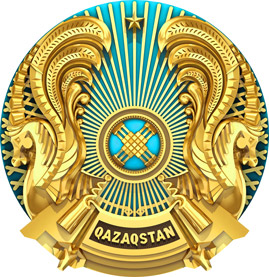Aral Sea
The Aral Sea depression was formed toward the end of the Neogene Period (which lasted from about 23 to 2.6 million years ago). Sometime during that process the hollow was partially filled with water—a portion of which came from the Syr Darya. In the early and middle parts of the Pleistocene Epoch (about 2,600,000 to 11,700 years ago), the region appears to have dried up, only to be inundated again sometime between the end of the Pleistocene and the early Holocene Epoch (i.e., after about 11,700 years ago)—the latter instance being the first time by the Amu Darya, which had temporarily changed its course from the Caspian to the Aral Sea. After that, except for some relatively brief dry spells between the 3rd and 1st centuries BCE, the two rivers’ combined flows generally maintained a high water level in the sea until the 1960s. - Britanica
In 1960, the Aral Sea was the fourth largest inland lake in the world. By 1990, as a result of the massive water intake for irrigated agriculture the water level had sharply decreased thus dividing the sea into two parts and exposing on the dried sea bed the evidences of the once navigable past.
The Aral Sea between 1960 and 2012 lost 85% of its area and 92% of its volume, while separating into four residual lakes. The Large Aral on the south endured a level drop of 25 m and rise of salinity from 10 g/l to well over 100 g/l. Over this period, the sea suffered immense ecological and economic damage including the destruction of its valuable fishery and degradation of the deltas of its two influent rivers. Nevertheless, in spite of this calamity, and contrary to reports that the sea is a lost cause (popular reports that the sea will “disappear” are simply false), hope has remained that the sea and its deltas could be partially rehabilitated.
The results of the large-scale project to restore the northern part of the Aral Sea exceeded all the expectations. The construction of the Kokaral Dam allowed raising the sea level by 4 m and increasing the water volume by 50 percent.
UNDP projects in Kazakhstan has introduced a series of energy-efficient technologies such as laser levelling and diversification of crops. Kyzylorda region has always been known for growing water-intensive rice. UNDP projects helped farmers start growing less water-intensive crops in arid zones so that the saved water can go to Syrdarya river which then flows into the Small Aral and fills it up.
Aral Sea Youth Summer School
The country that brought a sea back to life
BBC News
The Aral Sea Is Now Brimming With Life Thanks to Global Collaboration
How a Disappearing Sea Became a Town’s Main Attraction
New York Times
North Aral Sea Restoration
National Geographic
Sources: Britanica, World Bank


